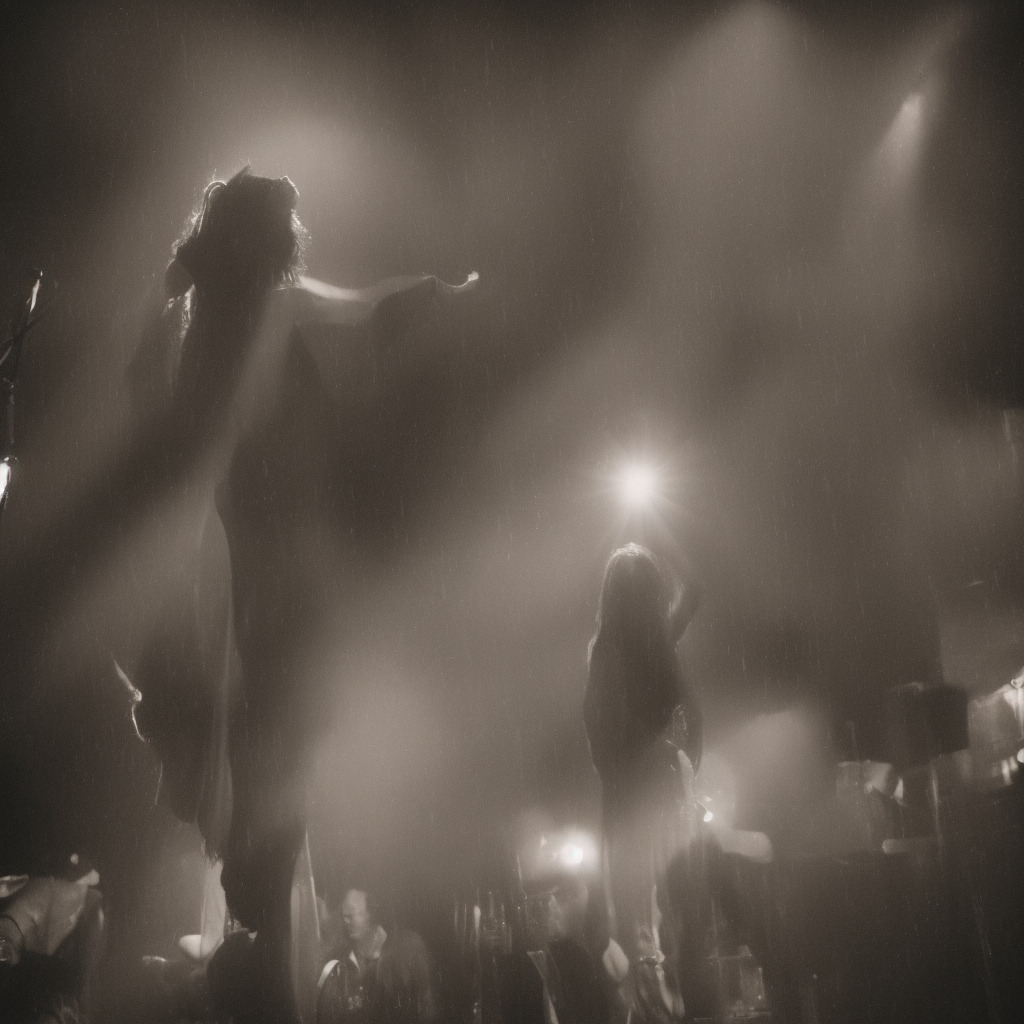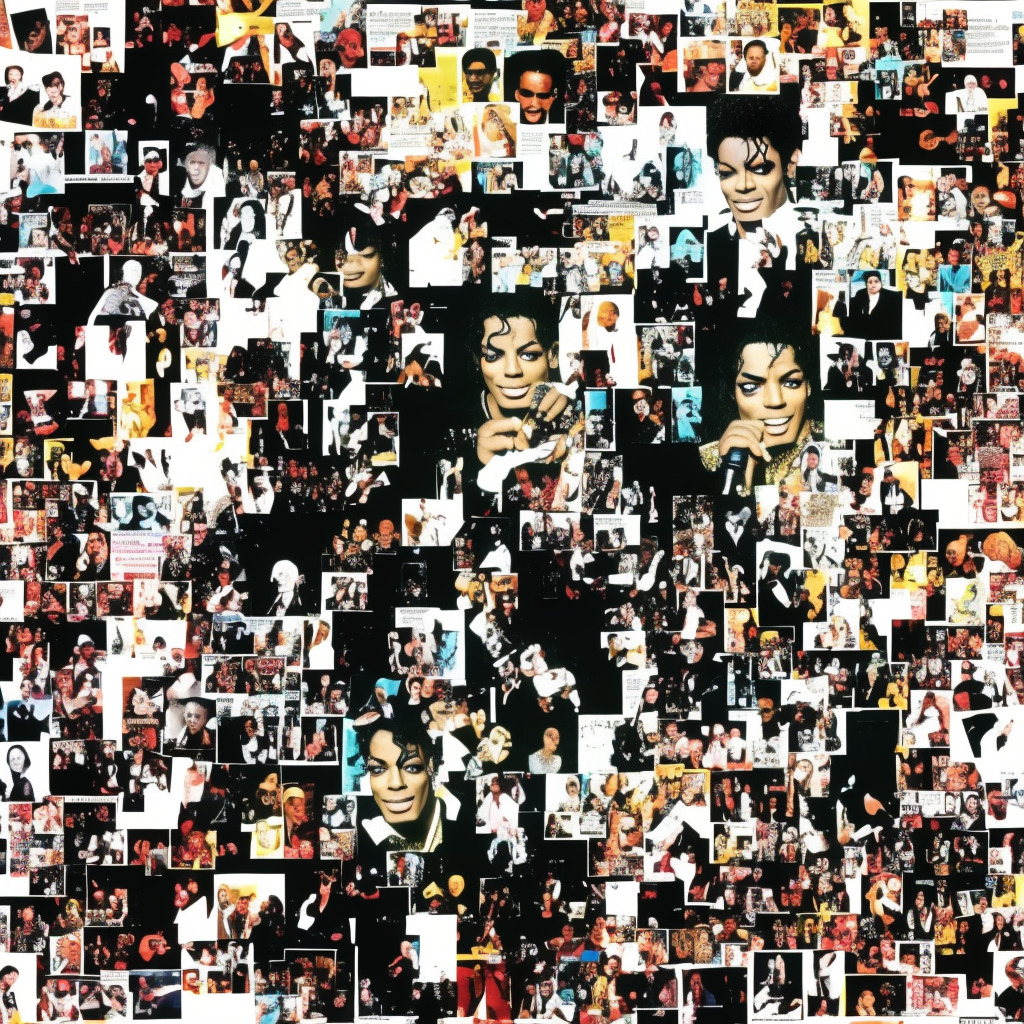🎙️Did you know? “Back To Black” was inspired by Amy Winehouse’s heartbreak 💔 over a split with her then boyfriend! The soulful queen turned pain into art, and we’re forever grateful 🙌✨ #AmyWinehouse #BackToBlack #MusicTrivia #FunFact #NowPlaying Read about it: tinyurl.com/2jyb4j36
Delving into the Depths of Winehouse’s Soul
“Back to Black”: Winehouse’s timeless soul, raw vulnerability, and emotional depth transcends generations, leaving an indelible mark on music history.

Amy Winehouse, a renowned and controversial figure in the world of music, left an indelible mark on the industry with her soulful voice and raw, heartfelt lyrics. Her song “Back to Black,” the title track of her critically acclaimed and commercially successful 2006 album, exemplifies the depth of her vulnerability and the power of her music.
Born in 1983, Winehouse was raised in a musically inclined household in North London, and her passion for music was cultivated from a young age. She began singing as a teenager and released her debut album, “Frank,” in 2003. However, it was “Back to Black” that catapulted her to international fame and established her as a 21st-century torchbearer of a soulful, retro sound reminiscent of 1960s girl groups and Motown artists.
“Back to Black” is a hauntingly beautiful song that speaks to the heartache of love and loss. Written in collaboration with producer Mark Ronson, the track showcases Winehouse’s raw and powerful vocals, which are perfectly complemented by an impeccable mix of bluesy, jazz-infused melodies and soulful, emotional lyrics. The song tells the story of her tumultuous relationship with then-boyfriend Blake Fielder-Civil, and it resonated with the masses, earning Winehouse numerous awards and accolades.
The “Back to Black” album garnered Winehouse six Grammy Award nominations, and she took home five of the prestigious awards, including Best New Artist, Record of the Year, and Best Female Pop Vocal Performance. Sadly, her career was marred by personal struggles and substance abuse, which ultimately led to her untimely death in 2011.
As an experienced music blogger, it is essential to acknowledge Winehouse’s troubled history, as her struggles played a significant role in shaping her music, specifically in the creation of the “Back to Black” album. However, it cannot be ignored that Amy Winehouse’s legacy as a talented and expressive artist has left a lasting impact on the world of music. “Back to Black” remains a testament to her singular ability to convey raw emotion and vulnerability with her powerful voice and poignant songwriting.
In conclusion, Amy Winehouse’s “Back to Black” is a moving and unforgettable song that captures the essence of human emotion in ways few artists have ever achieved. While her life was tragically cut short, her contributions to the world of music will forever be cherished and celebrated.
Charting the Course of a Modern Classic
“Back To Black”: A timeless testament to Amy Winehouse’s undeniable talent, chart-topping success, and enduring influence on the music world.

Released on 30th April 2007, “Back To Black” became a powerhouse single for the late Amy Winehouse, showcasing her unique blend of soul, jazz, and R&B influences. The song’s chart success is a testament to its timeless appeal and the undeniable talent of Winehouse as a songwriter and performer.
Upon its release, “Back To Black” entered the UK Singles Chart at number 71, but it didn’t take long for the song to gain traction and climb the charts. The single quickly garnered widespread acclaim and commercial success, ultimately peaking at number 8 on the UK Singles Chart. This achievement marked Winehouse’s third top 10 single in the UK, following the success of her previous hits “Rehab” and “You Know I’m No Good.”
The song’s success wasn’t limited to the UK; “Back To Black” resonated with music lovers all around the globe. In the United States, the track reached number 2 on the Billboard Bubbling Under Hot 100 and climbed to number 25 on the Billboard Hot R&B/Hip-Hop Songs chart. Additionally, the single achieved impressive chart positions in multiple European countries, reaching the top 10 in countries such as Belgium, Czech Republic, and the Netherlands.
“Back To Black” also made waves in the music industry with its numerous award nominations and wins. The song earned Winehouse a BRIT Award nomination for Best British Single in 2008 and won the Ivor Novello Award for Best Contemporary Song the same year. Furthermore, Winehouse’s unforgettable performance of “Back To Black” at the 2008 Grammy Awards contributed to her massive five-award sweep, including prestigious awards like Record of the Year and Song of the Year for her hit single “Rehab.”
In the years following its release, “Back To Black” has continued to make an impact on music charts. Following Winehouse’s untimely passing in 2011, the song re-entered the UK Singles Chart and reached a new peak position of number 4. The single also re-entered the Billboard Hot 100 in the US, peaking at number 57.
The enduring legacy of “Back To Black” can be felt not only through its chart success but also through the countless artists who have cited the song and Winehouse herself as a significant influence on their music. This modern classic stands as a testament to Amy Winehouse’s undeniable talent and the enduring power of honest and compelling songwriting.
Delving into the Depths of Winehouse’s Lyrics
Kept his dick wet
With his same old safe bet
Me and my head high
And my tears dry
Get on without my guy
You went back to what you knew
So far removed from all that we went through
And I tread a troubled track
My odds are stacked, I’ll go back to black
We only said goodbye with words
I died a hundred times
You go back to her, and I go back to
I go back to us
I love you much
It’s not enough
You love blow, and I love puff
And life is like a pipe
And I’m a tiny penny rolling up the walls inside
We only said goodbye with words
I died a hundred times
You go back to her, and I go back to
I go back to black
Black, black, black, black
Black, black, black
I go back to
I go back to
We only said goodbye with words
I died a hundred times
You go back to her, and I go back to
We only said goodbye with words
I died a hundred times
You go back to her, and I go back to black
“Back To Black” by Amy Winehouse is a track that delves deep into the raw emotions and struggles that arise from heartbreak and addiction. Released in 2006, the lyrics paint a vivid picture of Winehouse’s vulnerability and heartache as she tries to cope with the end of her relationship.
The lyrics’ meaning is rooted in Winehouse’s personal life, as she had a turbulent relationship with her boyfriend, Blake Fielder-Civil. The song’s narrative revolves around coming to terms with the end of their relationship, as he returns to his previous partner, leaving Amy to go “back to black.” It’s a metaphor for the dark and depressive state Winehouse finds herself in after the breakup.
Moreover, the lyrics highlight the issues with addiction both Winehouse and Fielder-Civil faced at the time, as evident in the lines, “You love blow, and I love puff.” As Winehouse was well known for her struggles with substance abuse, this song offers a candid insight into the impact it had on her life.
Not only does “Back To Black” reflect Winehouse’s personal struggles, but it also serves as a broader commentary on the early 2000s music scene. The prevalence of addiction and self-destructive behavior among musicians of the era is well documented, and Winehouse’s honest depiction of her experiences contributes to a larger conversation about the dark side of fame and the toll it can take on an artist’s mental health.
Overall, “Back To Black” is a heart-wrenching song that brilliantly showcases Amy Winehouse’s ability to convey complex emotions and experiences through her lyrics. Its resonance with listeners speaks to the universality of heartbreak and the struggle to find one’s footing in the face of loss and addiction.
A Look into the Visuals: The “Back To Black” Music Video
“Back To Black” music video: A nostalgic, monochromatic masterpiece showcasing Amy Winehouse’s vintage flair and poignant narrative, directed by Phil Griffin.
Directed by the talented Phil Griffin, the music video for “Back To Black” stays true to Amy Winehouse’s distinct style and artistic vision. The video, which was released in 2007, features a retro theme that perfectly complements the song’s somber mood and Winehouse’s vintage musical aesthetic. Filmed in black-and-white, the visuals evoke a sense of nostalgia, while also providing a nod to the golden era of soul and jazz music.
Throughout the video, Winehouse is seen mourning the loss of a lover, with various scenes highlighting her pain and sadness. Amy’s signature beehive hairdo and winged eyeliner are prominently displayed, adding a layer of authenticity to the throwback theme. The funeral procession, which serves as the central narrative of the video, adds a sense of solemnity to the visuals, further emphasizing the song’s message of heartbreak.
The dark and moody atmosphere of the video was achieved by filming in various locations in London, including the famous Abney Park Cemetery, which is known for its Gothic architecture and serves as a fitting backdrop for the melancholic narrative. The use of vintage cars and attire throughout the video solidifies its 1960s-inspired theme, with Winehouse’s style and presence anchoring the visuals throughout.
While the production budget for the “Back To Black” music video remains undisclosed, the captivating visuals and direction by Phil Griffin undoubtedly played an essential role in the song’s ascent to international success. The video has amassed millions of views on YouTube, and fan-made tributes continue to emerge, proving the impact and lasting legacy of both the song and its visuals.
As a testament to Winehouse’s talent and the impact of her music, “Back To Black” has also inspired various cover versions by notable artists, including Beyoncé and André 3000 for the soundtrack of the 2013 film “The Great Gatsby”.
When it comes to the “Back To Black” music video, there’s no denying that it serves as a poignant and fitting representation of the song’s themes and Amy Winehouse’s unparalleled style, creating an unforgettable visual experience for fans and music lovers alike.
Meet the Mastermind: The Composer Behind “Back To Black”
Delving deep into the creative force behind the soul-stirring melody of Amy Winehouse’s “Back To Black,” we find the composer, Mark Ronson. This versatile musical genius is not only an accomplished musician, DJ, and record producer, but also a Grammy-winning songwriter. Ronson’s impressive resume includes collaborations with various renowned artists, such as Lady Gaga, Bruno Mars, Adele, Paul McCartney, and Miley Cyrus, to name a few. This masterful composer achieved massive commercial success with his 2015 hit “Uptown Funk” featuring Bruno Mars, which topped international charts and earned him a handful of Grammy Awards. Ronson’s ability to blend diverse musical genres with strong, emotive lyrics is undeniably a testament to his status as a leading figure in the music industry.
Award-Winning Track and Its Cultural Impact
“Back To Black”: Amy Winehouse’s timeless track transcends genres, garners accolades, and leaves an indelible mark on popular culture.

“Back To Black” is not only a critically acclaimed song, but it has also managed to garner several awards and accolades over time. The track, released in 2006 as the title song of Amy Winehouse’s second studio album, has been praised for its vintage sound and soulful lyrics. It received the Ivor Novello Award for Best Contemporary Song in 2007, showcasing the undeniable talent of Winehouse and her co-writer, producer Mark Ronson.
The impact of “Back To Black” extends beyond the music industry as the song has made appearances in various forms of media. In television, the track was featured in an episode of the popular series “Gossip Girl” in 2009, and in the UK drama “Skins” in 2013. Additionally, the song was included in the 2018 film “Ocean’s 8” and has been used in several commercials, helping to solidify its cultural prominence.
“Back To Black” has inspired numerous cover versions by artists across different genres. For instance, Beyoncé and André 3000 teamed up for a haunting rendition of the song for the 2013 film “The Great Gatsby.” Their version brought a new fan base to the song, as well as introduced a modern twist to Winehouse’s classic.
Other notable cover versions of “Back To Black” include performances by Florence + The Machine and Muse, both of whom took on the track during their respective live shows. The song has even been adapted into different languages, with French singer Thomas Dutronc creating a French version titled “Retour au noir” for a 2015 tribute album dedicated to Amy Winehouse.
Given its continued influence and numerous accolades, it’s clear that Amy Winehouse’s “Back To Black” has left a lasting impact on the world of music and popular culture. The song’s success and recognition as a modern classic are a true testament to Winehouse’s undeniable talent and her unique ability to connect with listeners on a profound level.
Diving into the Musical Depths
As we delve into the intricacies of “Back To Black,” it is essential to recognize the foundation upon which this soulful track is built. Written in a 3/4 time signature, the song primarily revolves around a slow tempo of approximately 65 beats per minute, characteristic of Winehouse’s signature blend of contemporary R&B and classic soul.
The track is composed in the key of D Minor, evoking a moody, melancholic atmosphere that resonates throughout the song’s entirety. The chord progression follows a relatively simple structure, alternating between Dm, Gm, and A7, which provides a sense of stability and familiarity amidst the expressive emotionality of Winehouse’s vocal performance.
One cannot discuss “Back To Black” without acknowledging the expertly crafted arrangement that brings the composition to life. The song opens with a somber piano riff that is then enhanced by the entrance of a bass guitar and the crisp, vintage sound of a tambourine. The drums maintain a steady rhythm, utilizing a clave-like pattern that adds a subtle Latin flair to the mix.
The song’s bridge introduces a captivating, sultry saxophone solo that complements Winehouse’s vocals, further enriching the track’s emotional depth. The use of backing vocals in harmony with the lead during the chorus creates a sense of empathy and shared sorrow, as if to say, “we’ve all been there.”
“Back To Black” also showcases Winehouse’s impressive vocal range and masterful control over her instrument. Her voice effortlessly glides from sultry, velvety lows to soaring, powerful highs, painting a vivid picture of heartache and despair. The emotive delivery of her lyrics, combined with her undeniable vocal prowess, is undeniably a key element in the song’s enduring appeal.
In summary, “Back To Black” is a masterclass in the art of blending musical genres and techniques. From its solid foundation in soul and R&B to the infusion of Latin rhythms and jazz-inspired instrumentation, the track stands as a testament to Amy Winehouse’s incomparable skill as a songwriter and performer. The musical structure, while seemingly simple on the surface, holds within it a depth and complexity that continues to captivate listeners to this day.







